The Ultimate Guide to Bali White Water Rafting Experiences
Introduction to Bali’s Thrilling White Water Rafting Scene
Bali, Indonesia, often referred to as the “Island of the Gods,” is known for its lush landscapes, vibrant culture, and spiritual essence. Beyond its serene beaches and mystical temples, Bali offers a pulse-quickening adventure in the form of white water rafting. This adrenaline-filled activity not only highlights the island’s natural beauty but also provides an unparalleled way to experience Bali’s untamed rivers, verdant gorges, and lush rainforests.
Nestled among Bali’s rugged terrains are three major rivers renowned for their white water rafting opportunities: the Ayung River, the Telaga Waja River, and the Melangit River. Each of these rivers boasts a unique set of characteristics, making them ideal for varying levels of expertise. The Ayung River, located near Ubud, is popular among beginners due to its relatively gentle rapids and scenic surroundings. The Telaga Waja River, in contrast, offers a more challenging experience with its strong currents and steep descents. For those seeking an off-the-beaten-path adventure, the lesser-known Melangit River provides a mix of technical rafting and tranquil scenery.
Professional guides and tour operators are readily available to ensure a safe yet exhilarating experience for visitors. Rafting trips typically include modern safety equipment such as life jackets and helmets, as well as pre-tour safety briefings. Along the way, participants are treated to unforgettable sights, from cascading waterfalls and towering ravines to indigenous wildlife and hidden Balinese villages.
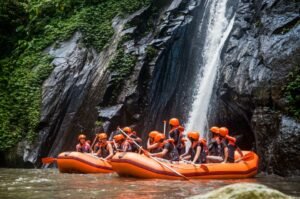
White water rafting in Bali is much more than an aquatic adventure. It represents a blend of nature, adventure, and cultural immersion. Guests are often greeted with stunning carvings on the riverbanks and glimpses of Balinese traditions seamlessly intertwined with the natural environment. Rafting through these rivers offers a unique perspective on Bali’s profound connection to its landscapes, ensuring an unforgettable experience for thrill-seekers and nature enthusiasts alike.
Why Bali is a Top Destination for White Water Rafting
Bali stands out as an unparalleled destination for white water rafting due to its rich combination of natural beauty, adrenaline-pumping rapids, and accessibility. Nestled within the Indonesian archipelago, the island boasts a diverse landscape of flowing rivers, tropical rainforests, and stunning river gorges. It offers adventurers an immersive experience, blending thrilling aquatic challenges with mesmerizing scenery.
One of the compelling reasons to raft in Bali is the availability of world-class rivers designed for rafters of different skill levels. The Ayung River, for instance, is renowned for its moderate rapids, making it suitable for beginners and families. Meanwhile, the Telaga Waja River caters to adrenaline seekers with its Grade III and IV rapids, ensuring a heart-pounding experience. These rivers not only deliver excitement but also offer panoramic views of lush greenery, cascading waterfalls, and cliffside rice terraces.
The island’s temperate climate and year-round suitability enhance its appeal. Bali consistently maintains warm temperatures and predictable river conditions, making it ideal for white water rafting enthusiasts any time of the year. Additionally, professional rafting operators provide high-quality equipment, trained guides, and a strong emphasis on safety to ensure participants’ well-being without compromising on adventure.
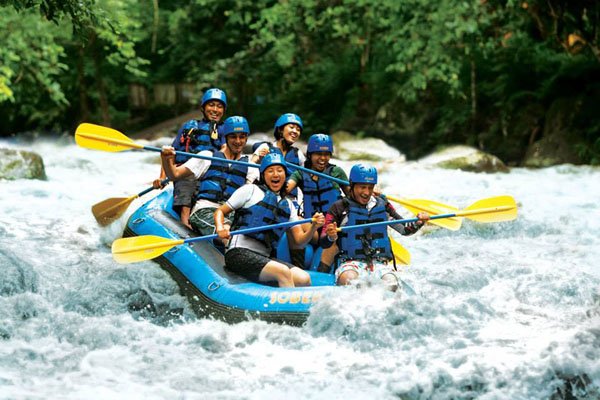
Convenience and hospitality further establish Bali’s reputation. Numerous rafting facilities are located a short drive from popular tourist hubs such as Ubud, Seminyak, and Kuta. Many tour packages also include transportation, meals, and optional cultural activities, adding value to the experience.
Bali’s blend of natural wonder, accessibility, and expertly curated rafting experiences makes it a global hotspot for water sports enthusiasts seeking both challenge and charm.
Best Time of Year for White Water Rafting in Bali
Bali is a year-round destination, but the experience of white water rafting varies significantly depending on the season. It’s crucial to understand the island’s climate to plan for an ideal Bali rafting adventure. Bali has two distinct weather patterns: the dry season, which runs from April to October, and the wet season, typically spanning from November to March.
- Dry Season (April to October) The dry season offers pleasant weather with warm temperatures and plenty of sunshine, making it the preferred time for most visitors. During this period, river levels are moderate, providing milder rapids that are suitable for beginners and families. On rivers like the Ayung or the Telaga Waja, the flow is steady and manageable, creating a safe yet exhilarating environment. The dry season is characterized by clear skies, enabling participants to fully immerse themselves in the lush, surrounding scenery while navigating the waterways.
- Wet Season (November to March) The wet season brings heavier rainfall, which can significantly raise river levels and amplify the intensity of rapids. The Ayung River, for example, can experience swift and challenging currents during this time, offering a more thrilling adventure for adrenaline enthusiasts. However, the frequent rain also increases the chances of sudden weather changes, and safety precautions are heightened. While the wet season is suited for experienced rafters, some sections may be closed during severe conditions to ensure safety.
Factors like personal skill level, safety concerns, and weather preferences should guide decisions regarding the best time to visit. Transitioning seasons, such as early April or late October, can strike a balance between manageable river conditions and fewer crowds.
Ayung River: Perfect for Beginners and Nature Enthusiasts
The Ayung River in Bali is one of the most popular destinations for white water rafting, particularly suitable for beginners and those who appreciate a natural, scenic setting. Flowing gently through lush tropical rainforests, the river offers a combination of mild rapids and stunning landscapes, creating a thrilling yet approachable rafting experience for individuals of all skill levels.
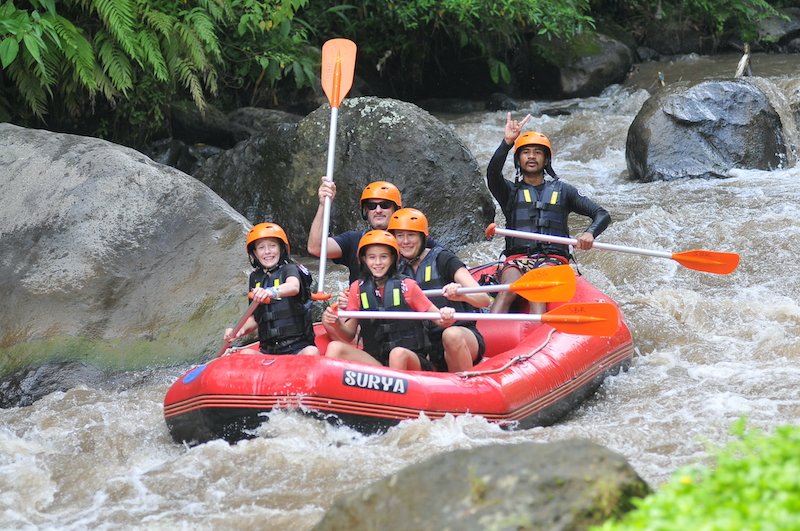
The rapids of the Ayung River are classified as Grade I and Grade II, making them ideal for beginners or families with children. These classifications indicate that the waves and obstacles are relatively small, requiring minimal paddling effort and no prior rafting experience. Certain sections of the river offer just enough adrenaline to excite participants without overwhelming them, ensuring a safe and enjoyable activity for all. Professional guides accompany each group to navigate the route effectively while enhancing the experience with local insights and expertise.
What elevates the Ayung River experience is its surrounding environment. The dense greenery and towering cliffs provide rafters with a close-up view of Bali’s unspoiled natural beauty. Along the journey, participants can marvel at waterfalls cascading from cliff edges, discover hidden caves, and catch glimpses of native wildlife. Another highlight is the presence of intricate stone carvings etched into the riverbanks, depicting traditional Balinese mythology and artistic heritage.
Rafting tours on the Ayung River typically last about two hours and often conclude with a well-deserved Balinese meal. The activity combines adventure with opportunities for relaxation, making it an excellent choice for travelers seeking both excitement and tranquility.
Telaga Waja River: High-Adrenaline Rapids and Stunning Landscapes
Telaga Waja River, nestled in Bali’s eastern region, offers a premier white water rafting experience that combines thrilling rapids with breathtaking natural scenery. Known as one of the most exciting rivers for rafting on the island, it provides a picturesque yet challenging adventure suitable for adrenaline seekers and nature enthusiasts alike.
Stretching approximately 16 kilometers, the Telaga Waja River boasts Class II to Class IV rapids, ensuring an intense aquatic adventure for participants. Its waters are sourced from Mount Agung, Bali’s highest volcano, contributing to its clear and cool flow year-round. Rafters are treated to dynamic shifts in current, with moments of calm followed by sudden drops and surging waves that demand sharp reflexes and teamwork. One of the river’s highlights is a thrilling 4-meter vertical drop, often described as the ultimate test of courage for rafters navigating this course.
The surrounding landscape further amplifies the appeal. Enveloped by lush tropical forests, cascading waterfalls, and terraced rice fields, the setting feels like a snapshot of Bali’s natural beauty. Ancient stone bridges and glimpses of local villages along the riverbanks add cultural intrigue to the adventure. The sights and sounds of chirping birds and rustling leaves harmonize with the rush of water, creating a sensory experience beyond just adrenaline.
Safety remains a priority on the Telaga Waja River. Certified guides accompany every rafting group, ensuring participants navigate the rapids securely while providing insights into the environment. High-quality safety gear, including helmets and life jackets, is provided, ensuring confidence for first-timers and seasoned rafters alike.
Melangit River: A Hidden Gem for Thrill Seekers
The Melangit River, located in the Klungkung Regency of eastern Bali, offers an unparalleled white water rafting experience for adventure enthusiasts. With its relatively narrow and winding course, the river stands out as a thrilling yet scenic destination for those seeking both excitement and natural beauty. Spanning a length of approximately eight kilometers, the river carves its way through tropical rainforests, towering gorges, and unspoiled landscapes that captivate visitors at every turn.
For thrill seekers, the Melangit River promises an adrenaline-pumping expedition through Class II to Class III rapids. These moderate to challenging rapids make it ideal for intermediate participants or adventurous beginners eager to up the ante. The river’s twists and turns, combined with occasional drops and splashes, provide a dynamic journey that keeps rafters continuously engaged. Alongside, skilled rafting guides ensure all safety measures are in place, allowing participants to focus entirely on the exhilarating descent.
What makes the Melangit River particularly unique is its secluded setting. Unlike Bali’s more crowded rafting spots, this river is less trafficked, creating a more intimate and immersive experience. Paddlers often find themselves surrounded by pristine nature, with the sounds of rushing water and chirping birds replacing the hum of crowds. En route, rafters are treated to glimpses of diverse wildlife, such as monkeys swinging in the trees and colorful birds soaring overhead.
Highlights of rafting here include traversing steep drops, navigating sudden bends, and passing through lush jungle tunnels formed by interlocking tree canopies. The journey typically takes around one and a half hours to complete, providing enough time to soak in the adventure while marveling at the untouched environment. This blend of heart-racing excitement and serene natural beauty solidifies the Melangit River’s reputation as a hidden gem for thrill seekers in Bali.
Exploring the Iconic Unda River for Unique Rafting Experiences
The Unda River, nestled within Bali’s picturesque landscapes, offers an unparalleled backdrop for adventurous white-water rafting. Known for its serene yet captivating surroundings, this river provides a unique blend of exhilarating rapids and calm stretches, making it an ideal destination for rafting enthusiasts of varying skill levels. Flowing from Bali’s central highlands, the Unda River weaves through lush tropical vegetation, quaint villages, and pristine rice terraces, offering rafters not just an adrenaline-pumping activity but also a cultural and scenic immersion.
One of the defining features of rafting on the Unda River is its relatively gentle gradient. Compared to other rivers like the Ayung or Telaga Waja, it is especially suited for beginners or families seeking an adventurous yet manageable experience. However, the river still boasts exciting rapids that thrill even seasoned paddlers. Rafting operators often categorize the river’s rapids under the International Scale of River Difficulty as Class II to III, signifying moderate yet enjoyable challenges.
A significant highlight is the opportunity to witness Bali’s natural wonders up close. Rafters glide past cascading waterfalls, witness local farmers tending to their crops, and spot diverse wildlife ranging from exotic birds to small reptiles. With guides offering insight into the river’s ecological and cultural significance, participants gain a deeper appreciation of the island’s rich heritage.
The Unda River’s manageable currents also allow for plenty of other water-based activities. Many operators include fun stops where participants can swim or take photos under waterfalls, adding a playful aspect to the adventure. The journey typically ends at a tranquil site where rafters can bask in the beauty of the surroundings while enjoying refreshments.
Essential Safety Tips for White Water Rafting in Bali
White water rafting in Bali combines adventure with breathtaking natural beauty, but safety should always be the top priority for participants. Understanding the risks and taking proper precautions ensures an enjoyable experience without compromising well-being.
1. Choose a Reputable Operator
Select a licensed and experienced operator with a strong safety record. Verify their certifications and ensure that qualified guides who are professionally trained in white water rescue and first aid will accompany your group.
2. Wear Proper Safety Gear
Always wear a well-fitted life jacket and a helmet designed for water sports. These are essential to preventing injuries, especially in fast-moving waters. Avoid loose clothing and bring appropriate footwear, such as water shoes or secure sandals, to maintain grip and stability.
3. Understand the Difficulty Levels
Bali’s rivers, like the Ayung and Telaga Waja, offer varying levels of rapids ranging from beginner-friendly to advanced. Guests must assess their physical fitness and comfort with the chosen course. First-timers should stick to Class II or III rapids to avoid unnecessary risks.
4. Listen to Pre-Rafting Instructions
Attend the safety briefing conducted by guides before heading into the river. Learn how to hold the paddle correctly, respond to commands like “paddle forward,” and stay calm in case of capsizing. Following these guidelines can significantly reduce accidents.
5. Stay Alert on the Water
Keep an eye out for obstacles such as rocks, tree branches, or sudden drops. Avoid leaning too far out of the raft or putting limbs outside, as this increases the risk of injuries. Trust the guide’s commands for navigating particularly challenging sections.
6. Hydrate and Avoid Alcohol
Drink plenty of water to stay hydrated before the activity. Avoid consuming alcohol or heavy meals, as they can impair reflexes and judgment, both crucial for a safe and enjoyable rafting experience.
7. Know How to Handle Emergencies
In the event of falling out of the raft, remember to float on your back with feet pointing downstream to avoid collisions with obstacles. Guides will provide clear instructions on how to handle such situations, so staying calm is vital.
Adhering to these precautions ensures a safe and unforgettable white water rafting experience amidst Bali’s lush landscapes.
What to Pack for a White Water Rafting Adventure
Preparing for a white water rafting adventure in Bali requires careful packing to ensure comfort, safety, and maximum enjoyment during the activity. River excursions can be unpredictable, so having the right gear and personal items is essential. Below is a comprehensive list of must-have items for the experience.
Clothing Essentials
- Quick-drying clothes: Opt for lightweight, moisture-wicking shirts or rash guards and water-friendly shorts. Avoid cotton, as it retains moisture and can become uncomfortable when wet.
- Swimsuit: Wear a swimsuit underneath your clothes for convenience during water activities.
- Footwear: Secure, water-resistant sandals with ankle support or neoprene water shoes are ideal. Avoid flip-flops or sneakers that can become waterlogged.
Protective Gear
- Sunscreen: Select a waterproof, broad-spectrum sunscreen with a high SPF to prevent sunburn. Reapply as necessary throughout the day.
- Hat and Sunglasses: A wide-brimmed hat with a secure strap and polarized sunglasses with a retainer strap can protect against sun glare and harmful UV rays.
- Dry bag: Use a waterproof dry bag to store essentials like your phone, wallet, or camera to keep them safe from water damage.
Safety and Hydration
- Reusable water bottle: Carry a sturdy, insulated bottle to stay hydrated before and after your rafting session. Ensure it fits easily into a backpack or travel pouch.
- Personal medication: If required, pack any necessary medications in waterproof containers. Inform the guide team of any medical conditions before the trip.
- Insect repellant: Protect yourself from mosquitoes and bugs by applying a DEET-based insect repellant, especially for post-rafting activities.
Miscellaneous
- Towel: A small, microfiber towel is useful for drying off after the excursion. Its compact design makes it easy to carry.
- Change of clothes: After the adventure, a set of clean, dry clothes ensures you’re comfortable for the return journey.
- Waterproof camera: For capturing the experience, consider bringing a compact waterproof camera or a GoPro with a secure mount.
By packing these essentials, participants can focus solely on enjoying the adrenaline-fueled adventures awaiting them on Bali’s exhilarating white water rapids. Preparation ensures a smoother, more memorable experience.
Family-Friendly White Water Rafting Locations in Bali
Bali offers an array of white water rafting experiences perfectly suited for families, combining adventure with safety and accessible thrills. The island features serene rivers that provide gentle currents and picturesque scenery, ideal for those traveling with younger children or less-experienced participants. These destinations ensure a memorable and enjoyable outing for all ages.
1. Ayung River (Ubud)
The Ayung River is widely celebrated as Bali’s most family-friendly white water rafting spot. Featuring Class I and II rapids, this river provides a balanced mix of excitement and safety. The surrounding landscape boasts lush jungles, cascading waterfalls, and intricately carved stone walls narrating Bali’s rich culture. Families can enjoy the moderate pace, with plenty of opportunities to slow down and take in the beauty of the scenery. The guided tours are well-regulated, ensuring safety standards are consistently upheld.
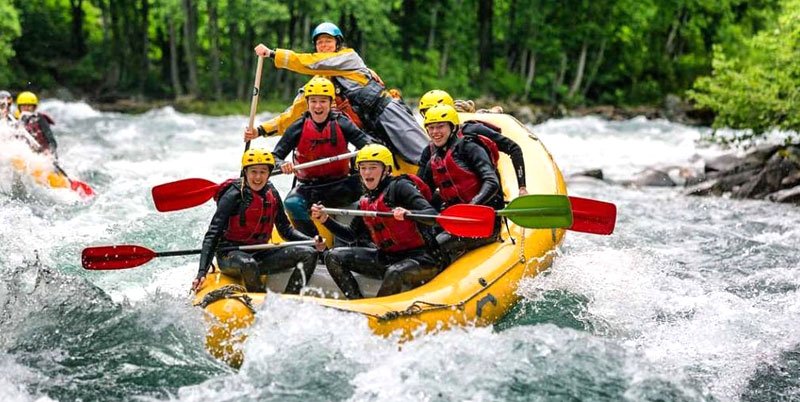
2. Melangit River (Klungkung)
Nestled within the calm and unspoiled region of Klungkung, the Melangit River offers a tranquil white water rafting experience. Known for its narrow canyons and shaded riverbanks, this location is perfect for families seeking a less intense adventure. The rapids here are gentle yet engaging, with Class II designations keeping things both safe and exciting. Melangit’s serene environment also makes it ideal for bonding and enjoying the natural surroundings.
3. Telaga Waja River (Karangasem)
Although Telaga Waja is more commonly associated with adrenaline-pumping thrills, certain sections of this river are family-appropriate, featuring easier rapids and breathtaking views of Mount Agung. Several rafting operators provide tailored routes that skip the more challenging segments, allowing children and older family members to fully participate without feeling overwhelmed. The journey includes moments of calm waters, giving the group ample time to rest and take in the majestic vistas.
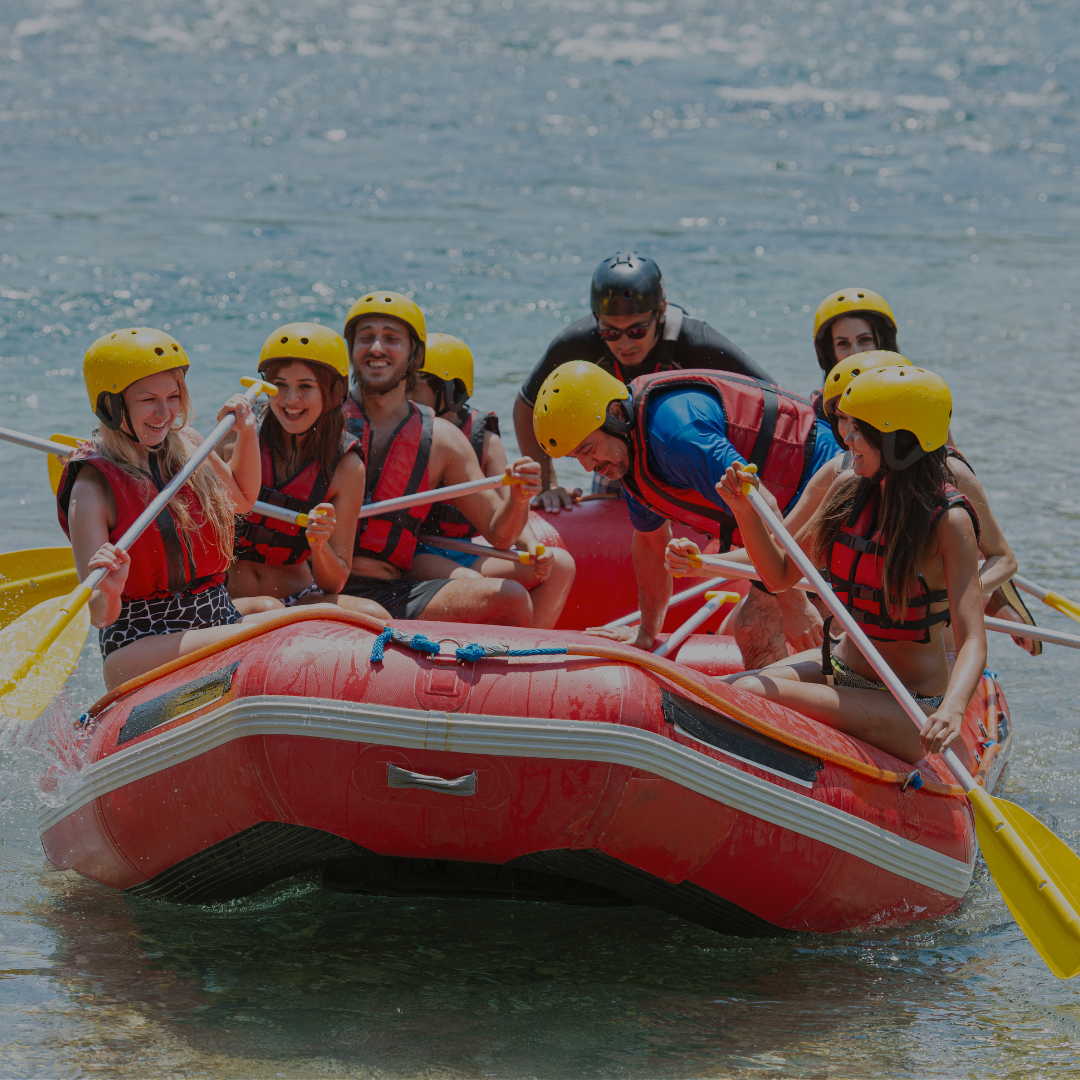
Each of these locations focuses on safety measures, including comprehensive briefings, child-friendly gear, and experienced guides to manage the activity. Families can confidently embrace the adventure while creating unforgettable memories amid Bali’s stunning natural landscapes.
Local Guides and Tours: How to Choose the Best Operator for Your Adventure
Selecting the right tour operator is critical to ensuring a safe, enjoyable, and memorable white water rafting experience in Bali. An informed decision allows adventurers to focus on the thrill of paddling through rushing rapids without any concerns about safety, organization, or logistics. Considering specific factors before booking can make a significant difference.
Accreditation and Certifications
Reputable operators adhere to international or local safety standards and should possess valid certifications. Look for operators affiliated with recognized adventure sports organizations or holding government licenses. This ensures that their guides are trained in safety protocols, first aid, and rafting equipment management, giving participants peace of mind while navigating Bali’s exhilarating rivers.
Experience and Reputation
An operator with extensive experience in providing guided rafting tours is more likely to have well-trained staff and detailed knowledge of Bali’s rivers. Researching customer reviews on platforms like TripAdvisor or Google Reviews can provide insights into their professionalism, communication, and service quality. Recommendations from locals or past visitors can also be valuable references for reliable options.
Equipment Quality
Top-notch equipment is non-negotiable. Participants should prioritize operators that consistently maintain their rafts, helmets, and life jackets while adhering to safety standards. Inspection of gear upon arrival is advisable to ensure it is clean, functional, and well-fitted to suit different body types.
Group Sizes and Personalization
Operators with smaller group sizes often provide more personalized experiences, which can enhance enjoyment and safety. Such operators often ensure that guides can focus on every participant’s skill level and needs, creating a more tailored adventure.
Additional Services and Costs
Compare pricing packages carefully, ensuring there are no hidden fees for essentials like transportation, meals, or photography services. Many operators also offer extra amenities, such as hot showers or buffet lunches at the end of a thrilling day, which can add to the overall value of the experience.
Environmental Commitment
Opt for operators committed to eco-friendly practices, such as respecting river ecosystems and minimizing waste. Supporting sustainable tourism not only preserves Bali’s natural beauty but also reflects a responsible approach to adventure travel.
Choosing the right rafting operator involves weighing these key considerations to find a balance between cost, safety, and overall experience.
Post-Rafting Adventures: What to See and Do Nearby
After an exhilarating day navigating Bali’s roaring rivers, a wealth of nearby attractions and activities awaits, offering opportunities to unwind, explore, or continue the adventure. Each river renowned for white water rafting—be it Ayung, Telaga Waja, or Melangit—offers access to unique cultural sites, lush landscapes, and local experiences.
Discover Surrounding Natural Wonders
Bali’s abundant natural beauty offers endless options for exploration. Near the Ayung River, visitors can trek through the sprawling rice terraces of Tegalalang, a UNESCO World Heritage site famed for its cascading greenery. Those rafting on the Telaga Waja River can venture to Besakih Temple, nestled on Mount Agung’s slopes, a spiritual hub offering superb vistas. In the vicinity of Melangit River, the Sekumpul Waterfall entices with its awe-inspiring cascades surrounded by dense jungle.
Experience Balinese Culture
Post-rafting, immerse in Bali’s rich cultural tapestry. Ubud, near the Ayung River, beckons with its art markets, galleries, and the serene Ubud Monkey Forest. Traditional Balinese dance performances at Saraswati Temple create unforgettable cultural encounters. Alternatively, those rafting in eastern Bali near the Telaga Waja River can visit the ancient village of Tenganan, known for its unique traditions and double Ikat weaving.
Savor Local Delicacies
A day on the river builds an appetite for Bali’s flavorful cuisine. Popular warungs near rafting areas serve local dishes like nasi campur and babi guling. Ubud, in particular, boasts an eclectic mix of restaurants offering everything from traditional Balinese fare to gourmet dining experiences.
Unwind and Rejuvenate
To relax after the adrenaline rush, nearby wellness havens offer numerous options. Ubud, in close proximity to the Ayung River, features luxury spas specializing in Balinese massages and yoga retreats. Visitors rafting near Candidasa on the Telaga Waja River can enjoy serene coastal views at yoga studios or lounge beachside.
Conclusion: Making Memories with Bali’s White Water Rapids
Immersing oneself in Bali’s white water rafting experiences is not merely about navigating rivers; it is about forging unforgettable memories in the heart of nature. The island’s dynamic waterways—from the Ayung River’s scenic beauty to the Telaga Waja’s adrenaline-pumping rapids—provide a rare opportunity to blend adventure with cultural and environmental immersion.
Every stage of the rafting experience in Bali offers a highlight to cherish. The pre-rafting activities, such as gearing up and safety briefings, set an engaging tone, familiarizing participants with both the technical side of rafting and the unique features of the river. Once on the water, the rapids become a playground for teamwork, precision, and excitement. Whether cascading down exhilarating drops or gliding through calm stretches framed by lush jungle, rafters are treated to ever-changing landscapes that provide continuous visual and experiential delights.
For those who value cultural discovery alongside the thrill of adventure, the Ayung River offers striking visuals of cliffside carvings and occasional glimpses of Balinese villages, enriching the journey with a distinct local character. Meanwhile, the Telaga Waja, known for its intense routes and volcanic views, is an ideal choice for thrill-seekers craving a test of endurance. Both destinations reward participants with moments of connection, both with nature and fellow adventurers.
The experience does not end on the river. Post-rafting activities, often accompanied by traditional meals, allow for reflection as participants share stories, laughter, and success. In Bali, every turn of the white water is an invitation not only to explore but to create memories that endure well beyond the adventure.
